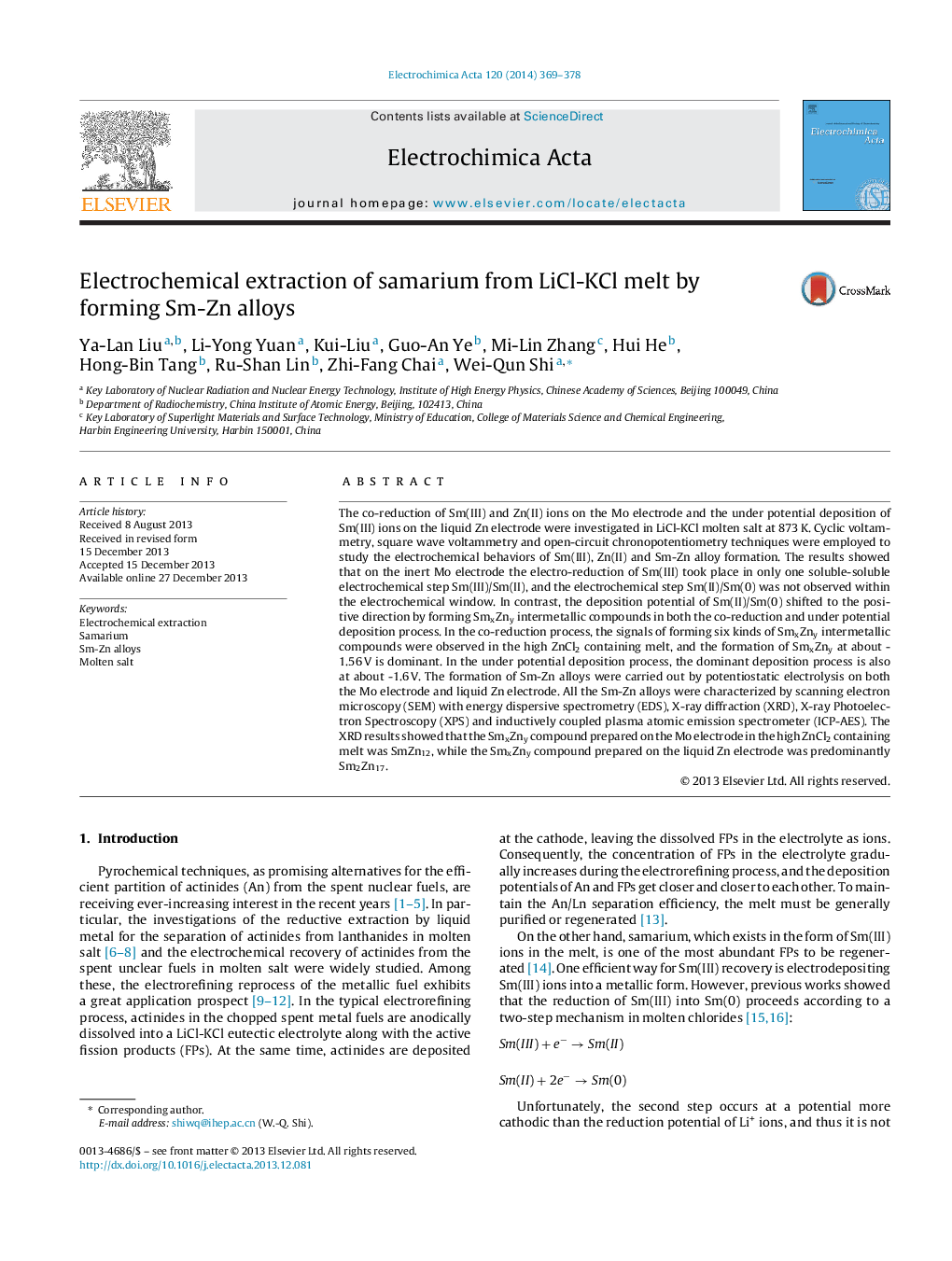| Article ID | Journal | Published Year | Pages | File Type |
|---|---|---|---|---|
| 6613879 | Electrochimica Acta | 2014 | 10 Pages |
Abstract
The co-reduction of Sm(III) and Zn(II) ions on the Mo electrode and the under potential deposition of Sm(III) ions on the liquid Zn electrode were investigated in LiCl-KCl molten salt at 873Â K. Cyclic voltammetry, square wave voltammetry and open-circuit chronopotentiometry techniques were employed to study the electrochemical behaviors of Sm(III), Zn(II) and Sm-Zn alloy formation. The results showed that on the inert Mo electrode the electro-reduction of Sm(III) took place in only one soluble-soluble electrochemical step Sm(III)/Sm(II), and the electrochemical step Sm(II)/Sm(0) was not observed within the electrochemical window. In contrast, the deposition potential of Sm(II)/Sm(0) shifted to the positive direction by forming SmxZny intermetallic compounds in both the co-reduction and under potential deposition process. In the co-reduction process, the signals of forming six kinds of SmxZny intermetallic compounds were observed in the high ZnCl2 containing melt, and the formation of SmxZny at about -1.56Â V is dominant. In the under potential deposition process, the dominant deposition process is also at about -1.6Â V. The formation of Sm-Zn alloys were carried out by potentiostatic electrolysis on both the Mo electrode and liquid Zn electrode. All the Sm-Zn alloys were characterized by scanning electron microscopy (SEM) with energy dispersive spectrometry (EDS), X-ray diffraction (XRD), X-ray Photoelectron Spectroscopy (XPS) and inductively coupled plasma atomic emission spectrometer (ICP-AES). The XRD results showed that the SmxZny compound prepared on the Mo electrode in the high ZnCl2 containing melt was SmZn12, while the SmxZny compound prepared on the liquid Zn electrode was predominantly Sm2Zn17.
Related Topics
Physical Sciences and Engineering
Chemical Engineering
Chemical Engineering (General)
Authors
Ya-Lan Liu, Li-Yong Yuan, Kui-Liu Kui-Liu, Guo-An Ye, Mi-Lin Zhang, Hui He, Hong-Bin Tang, Ru-Shan Lin, Zhi-Fang Chai, Wei-Qun Shi,
